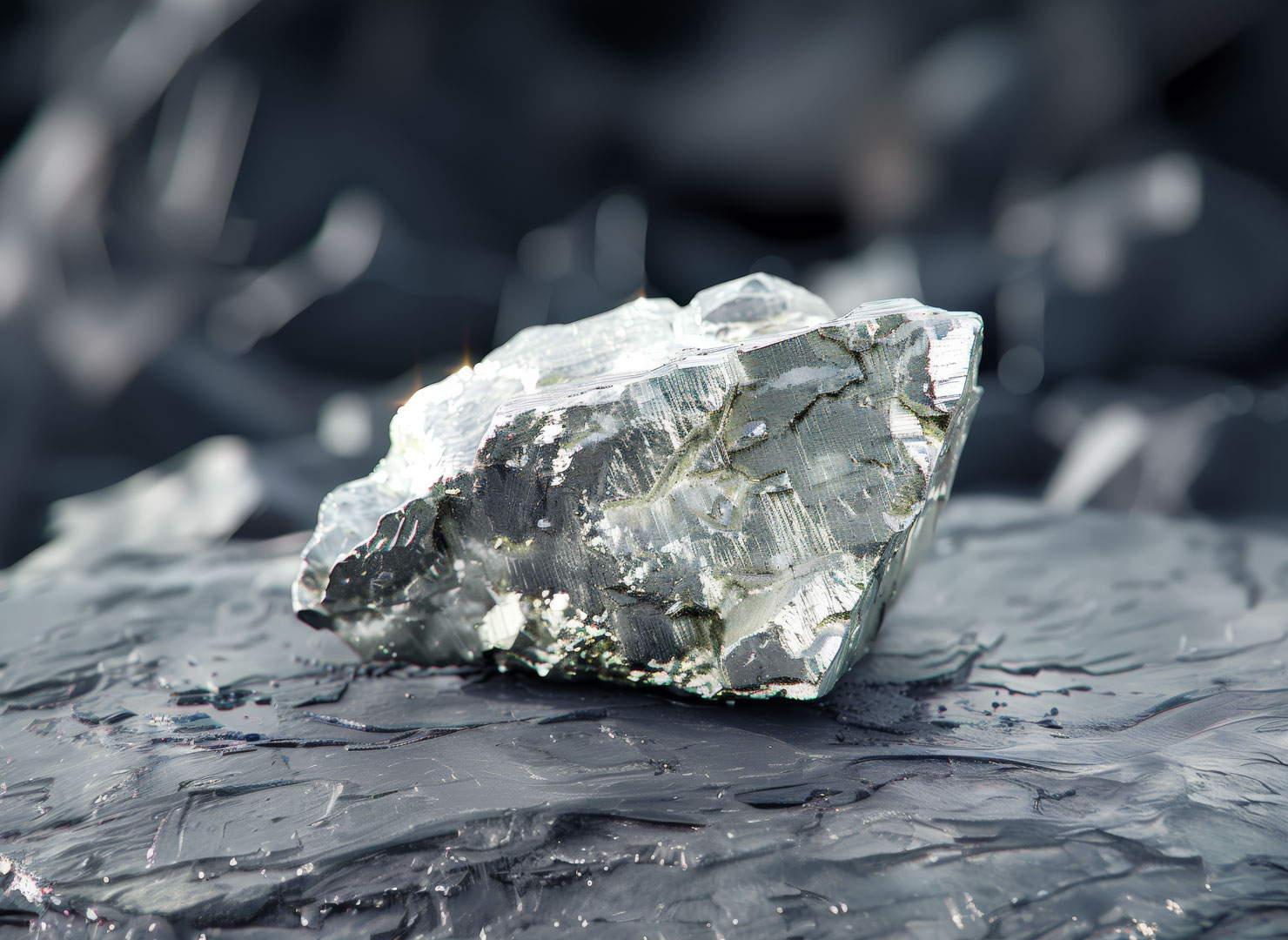The Element Lanthanum
On this page you can find out more about the rare earth element
Name: Lanthanum
Symbol: La
Ordinal number: 57
Density: 6,15 g/cm3
Melting point: 921 °C
Boiling temperature: 3.457 °C
Lanthanum is one of the lanthanidesA group of 15 elements with chemically very similar properties. in the periodic table.
Introduction
Namesake of the Lanthanides
Lanthanum, whose atomic number is 57, belongs to the lanthanides and also gives the group its name. The metal’s most important uses are for catalysts and alloys.

Lanthanum, a Long-Hidden Element
In 1841, the Swedish chemist Carl Gustav Mosander extracted lanthanum from cerite, a mixture of oxides of various rare earths discovered at the beginning of the 19th century. This is where the element’s name comes from: Mosander called it lanthanum (from the Latin “lanthanein” = hidden), as it was “hidden” in the cerite earth.
Main areas of application for lanthanum

The Discoverer of Lanthanum
Carl Gustav Mosander was born in Kalmar, Sweden, in 1797. Trained as a doctor, he became a research assistant to Jöns Jakob Berzelius and eventually discovered several lanthanides during his work as a professor of Chemistry and Mineralogy.
Characteristics
Superconductor: Lanthanum Conducts Electricity at Low Temperatures Without Energy Loss
Lanthanum is a malleable shiny silver-white metal that can be hammered. It forms a white oxide layer when exposed to air. Lanthanum is also a superconductor — that is, it can conduct electricity without any loss of energy, but only at extremely low temperatures. As this so-called transition temperature appears to be comparatively high in experiments, lanthanum could play an important role in research into superconductors and their use in various technologies.
Areas of Application
Rare Earth Element in Demand for Mixed Metals and Alloys
Around 25 years after its discovery, lanthanum found its first major industrial application as a component of the so-called incandescent mantle, a light source for gas-powered lamps. The inventor of these lamps, the Austrian chemist Carl Auer von Welsbach, also discovered other rare earth elements. In later decades, lanthanum was also used to make optical lenses and as a catalyst, mainly for petrochemicals.
Another field of application for lanthanum is mixed metal, an alloy of cerium, lanthanum, praseodymium, and other rare earths. It is used as an additive in the production of aluminum and steel. Even without other rare earth elements, lanthanum is a sought-after alloy additive – used, for example, to improve the corrosion resistance of superalloys at high temperatures and with nickel in hydrogen storage technologies. Lanthanum is also used in solid electrolytes, which are ideal for technologies such as solid-state batteries, stationary fuel cells, and water electrolysis.

Lighting
Rare earths are used to produce classic fluorescent tubes, modern energy-saving lamps, and LED lights. The raw materials are also used in devices with picture tubes, tablets, and smartphones, where they produce red pixels.
Learn more

Catalysts
Catalysts increase the speed of a chemical reaction and are indispensable in many industries. In automotive catalytic converters, for example, catalysts convert combustion pollutants into non-toxic residues.
Learn more

Metal Alloys
Metal alloys are compounds of metallic materials. Modern alloys often contain rare earths to improve specific properties. Rare earth alloys are used in aircraft engines and flints in lighters, among other products.
Learn more

Water Electrolysis
Green hydrogen is showing great promise as a fuel that can make energy-intensive industries and heavy goods transport more climate-friendly. It is produced by the electrolysis of water using green electricity from nuclear plants or renewable sources. The ramp-up of the hydrogen economy is increasing the demand for rare earths used in electrolyzers.
Learn more
Deposits
Critical Raw Material With a Highly Concentrated Market
Both the United States and the European Union classify most rare earths as critical raw materials. As lanthanum is more abundant in deposits, its supply situation has so far been assessed as less critical. However, the mining and processing of lanthanum is still concentrated in just a few countries, above all China.

Expansion of Fuel Cell Technology Could Drive Demand
Another factor to consider is whether and how quickly future technologies such as water electrolysis, solid-state batteries, and fuel cells will become established. According to the German Mineral Resources Agency DERA, the demand for lanthanum for these applications alone by 2040 could be slightly higher than the total mine production of lanthanum in 2018.
Raw Materials Trading Industrial Customers
TRADIUM trades in all industrially relevant rare earth oxides. Choose from a wide range of specifications and take advantage of the option to reserve batches for the long term.
Purchase of Physical Assets for Private Customers
Benefit as a private customer from the exciting market for rare earths as a physical asset. You can find out here what opportunities TRADIUM offers and what tax advantages a purchase of raw materials entails.